A night in Mount Koya is filled with many beautiful must see sights but none more so than Okunoin Cemetery. Visiting Okunoin, deep in the mountains of Koyasan, presented us with one of those very special and incredibly rare travel moments: the kind that leave you stunned and completely in awe, the kind that stay cocooned in your memory and that never fail to draw a smile when your mind returns to the moment on a random afternoon. The two of us, standing hand in hand, in the eerie silence and complete darkness of the ancient Buddhist cemetery of Okunoin is an experience we’ll never forget.
Okunion Cemetery
Okunoin is a dramatic Buddhist cemetery, located in the Mount Koya, or Koyasan, mountains of Japan. The area is a UNESCO World Heritage Site designated as one of the Sacred Sites and Pilgrimage Routes in the Kii Mountain Range. Koyasan was the birthplace of Shingon Buddhism in Japan over 1,200 years ago and is widely regarded as one of the most sacred places in the country.
The graveyard contains over 200,000 unique gravestones and monuments which dominate the forest and those resting there want to be close to Kobo Dashi, the founder of Shingon Buddhism, in death. The tombstones belong to individuals and companies who are placed there by loved ones. One of the most infamous tombs is one from a termite company in memory of all the termites they exterminated. Many of the memorials are draped with red hats or gowns. These red clothed Mizuko Jizos figures represent the babies and children who have passed by and are placed by parents to protect their children en route to the afterlife.
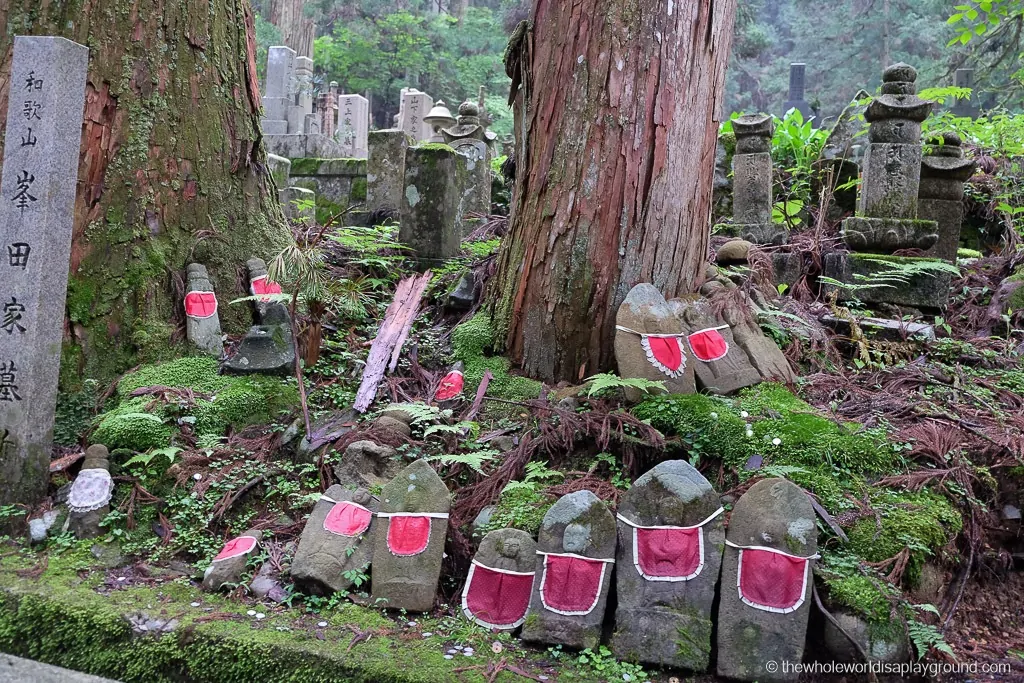
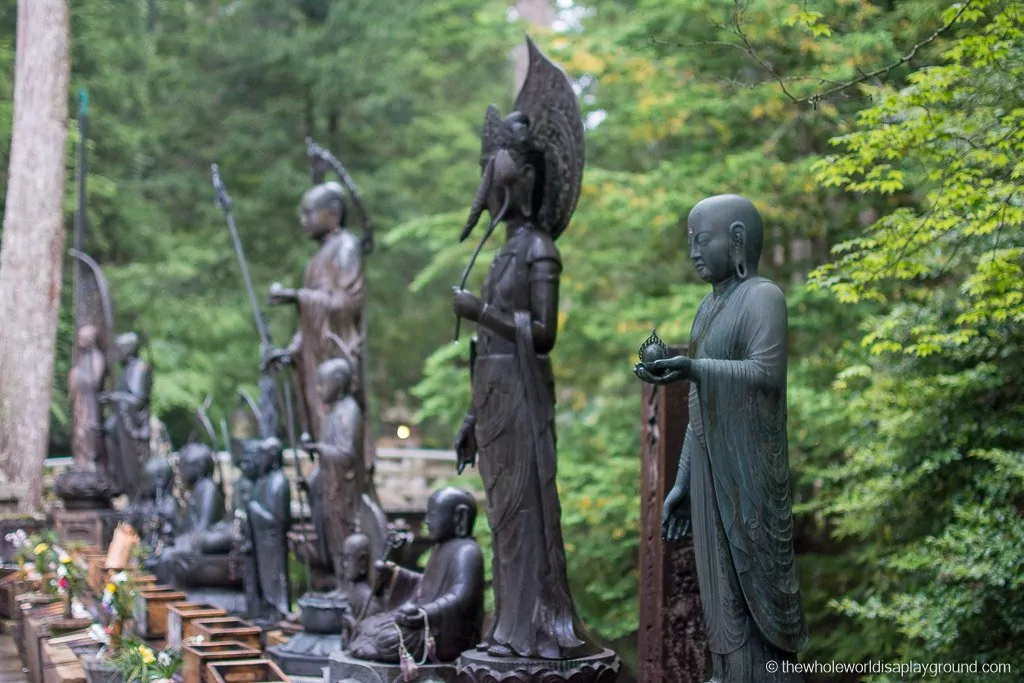
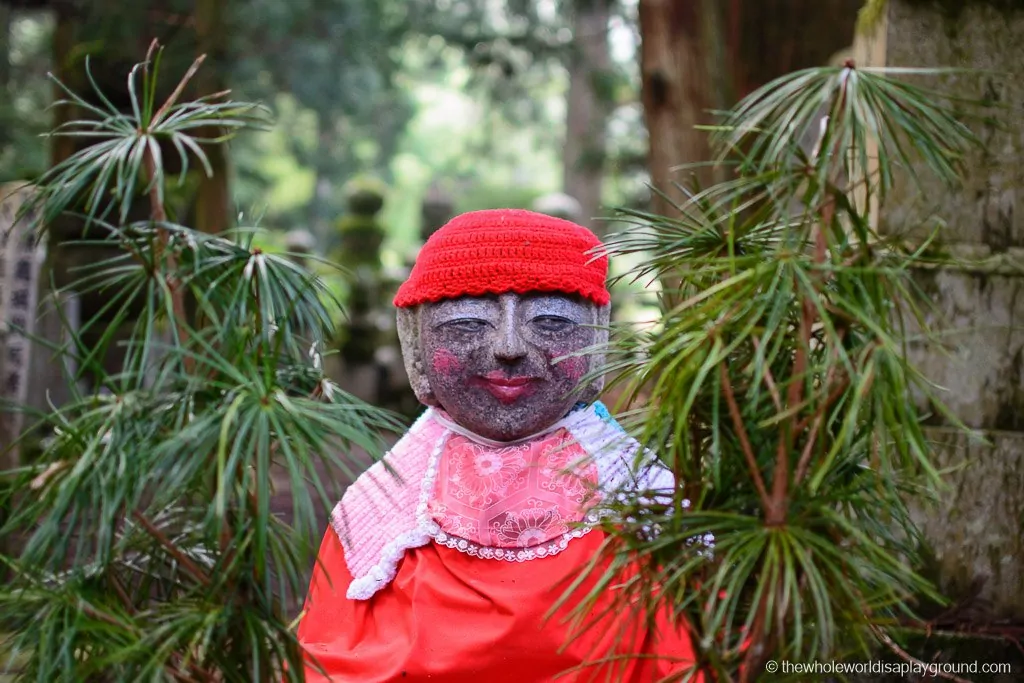
The beliefs of Shingon Buddhism are fascinating: there are no dead in Okunoin, only waiting spirits. It’s founder, Kobo Daishi, is believed to rest there in eternal meditation as he awaits the Buddha of the Future. When Kobo Dashi rises up to meet the Buddha of the Future so too will all those resting in the cemetery.
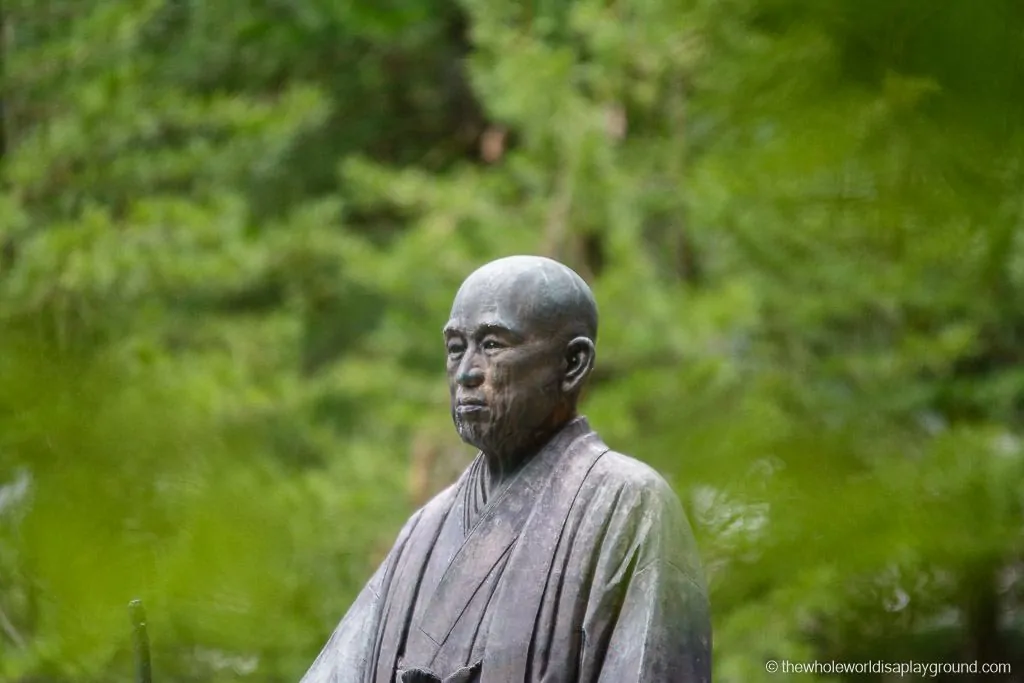
Where to Stay in Mount Koya
If you’ve visiting Mount Koya we cannot recommend highly enough staying at one of the Buddhist monestaries. A night in a traditional Buddhist Temple, eating Buddhist vegetarian meals and watching the dawn prayer service was an intimate and unforgettable experience. We recommend staying close to Okunoin Cemetary which will allow easy access late at night and early in the morning. The best Buddhist temples close to the cemetary are
- Yochi-in: All rooms in Yochi-in are Japanese style with traditional futon bedding and is perfectly located for exploring the historic town of Koyasan. For the location, quality of accomodation and on-site onsen Yochi-in is very good value in Mount Koya – Check prices now!
- Shukubo Koya-san Eko-in Temple Enjoy group meditation, delicious meals and morning prayers at this temple located by the entrance to Okunoin Cemetary – Check prices here
- Kumagaiji: Recently renovated 9th century monastery has a more modern feel than other temples, with Wi-Fi and comfy chairs on the balcony’s of each room. The monks are happy for people with tattoos to use the onsen, something which is not usually common in Japan – Check prices here
Click here for the latest Mount Koya hotel prices
The Mausoleum
As we made our way through the cemetery we finally approached the most sacred part of all: the Gobyo no Hashi Bridge marks the entry to the Mausoleum of Kobo Dashi. No food, drinks or photographs of the Mausoleum are allowed after crossing the bridge and visitors should bow in respect to Kobo Dashi who is resting in the Mausoleum in eternal mediation.
A wooden box, on the left of the path, contains the Miroku stone which is said to weigh ones sins. It is customary to try to raise the stone to the highest shelf in the cabin and it is believed that the stone will feel lighter to good people.
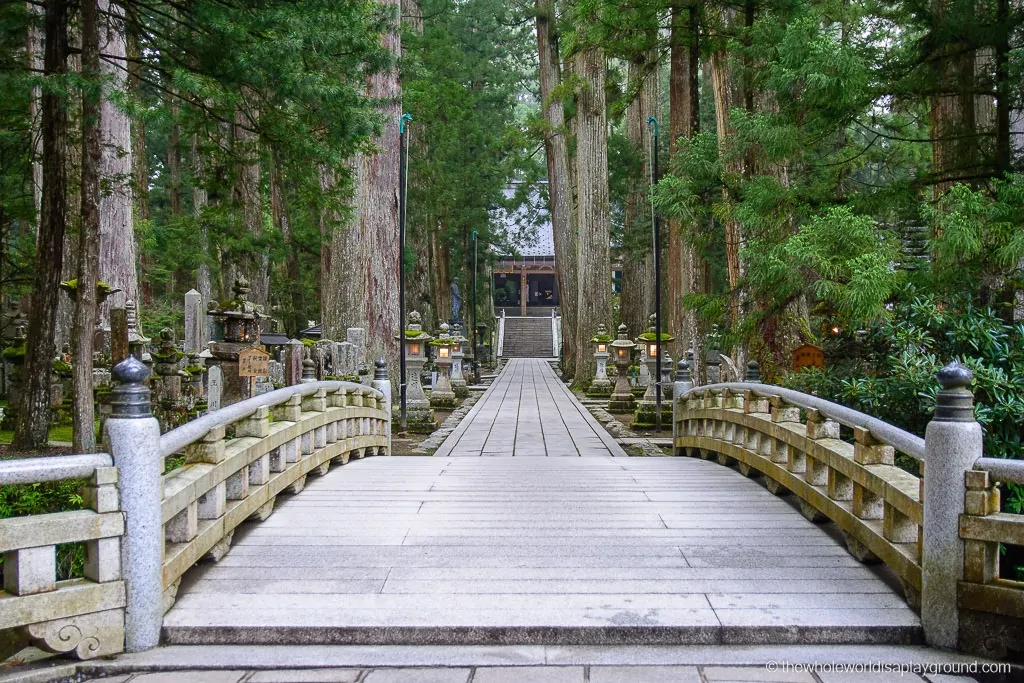
The Hall of Lamps (Torodo Hall)
This magical Torodo hall is the main place of worship in the graveyard and contains over 10,000 lanterns which were donated by worshippers. The lanterns line the walls of the Torodo Hall from its floor to its ceiling and are said to have been illuminated for over 900 years and will remain eternally lit. The smell of sweet incense hung in the air as we wandered around the endless bright columns of light. The Hall is simply one of the most stunning things we’ve ever seen!
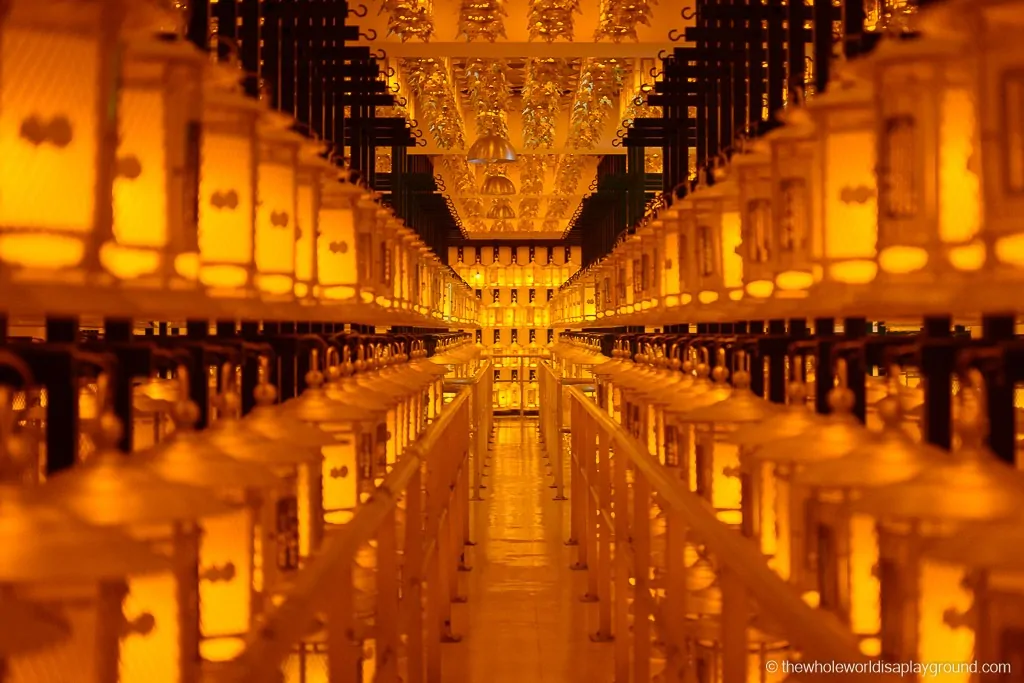
A walk through Okunoin: Okunoin at Night
After arriving at Mount Koya late in the afternoon we settled into our Buddhist temple, where we were staying for the night, and decided to venture into Okunoin after dark. The traditional entrance to the cemetery is marked by the Ichinohashi bridge where visitors pay their respects to Kobo Daishi with a bow before crossing into the other world where hundreds of thousands of spirits lie at rest.
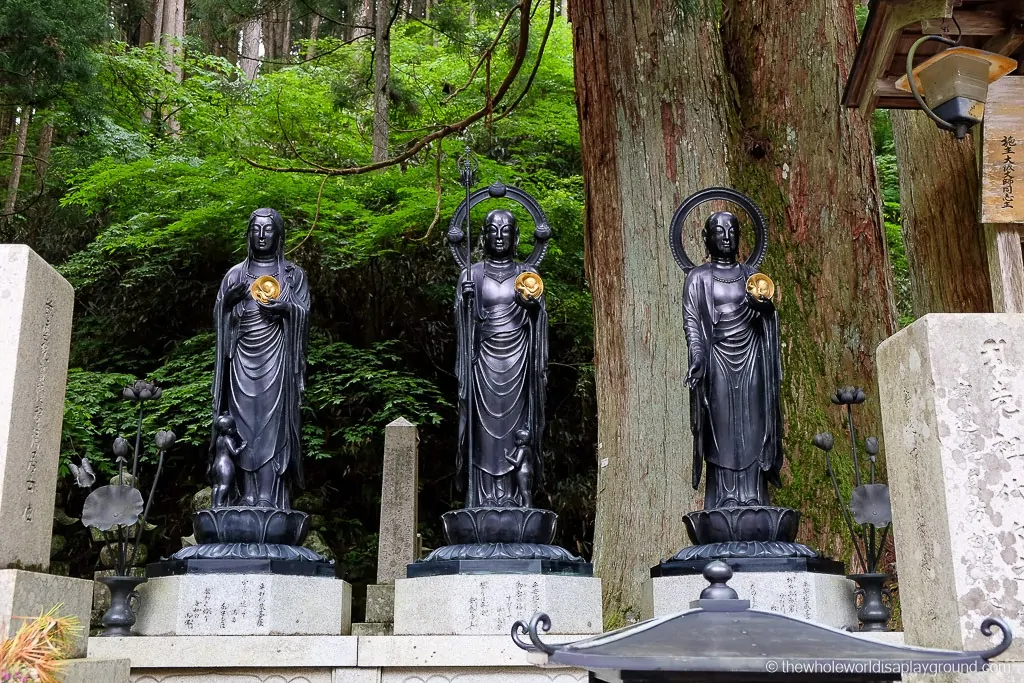
Darkness quickly descended as we wandered through the cemetery. The warm glow of the lanterns lining the pathway eerily illuminated the graves as we wandered deeper into the darkness. It was a surreal experience standing in complete silence, aware only of the sound of our heart beats while surrounded by the silhouettes of the thousands of headstones interrupting the darkness of the night.
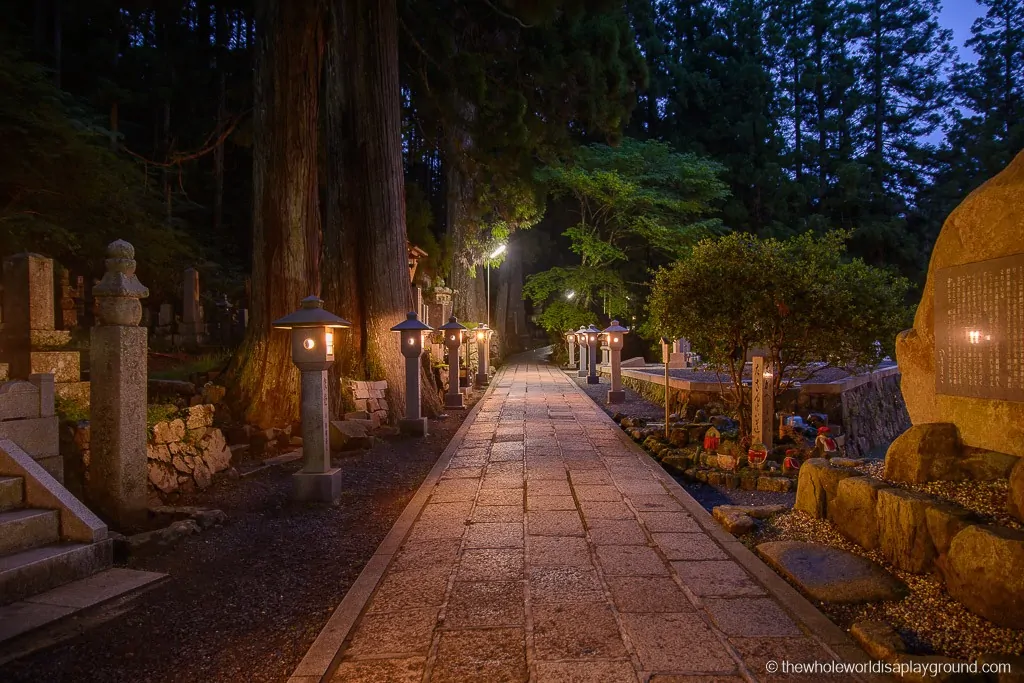
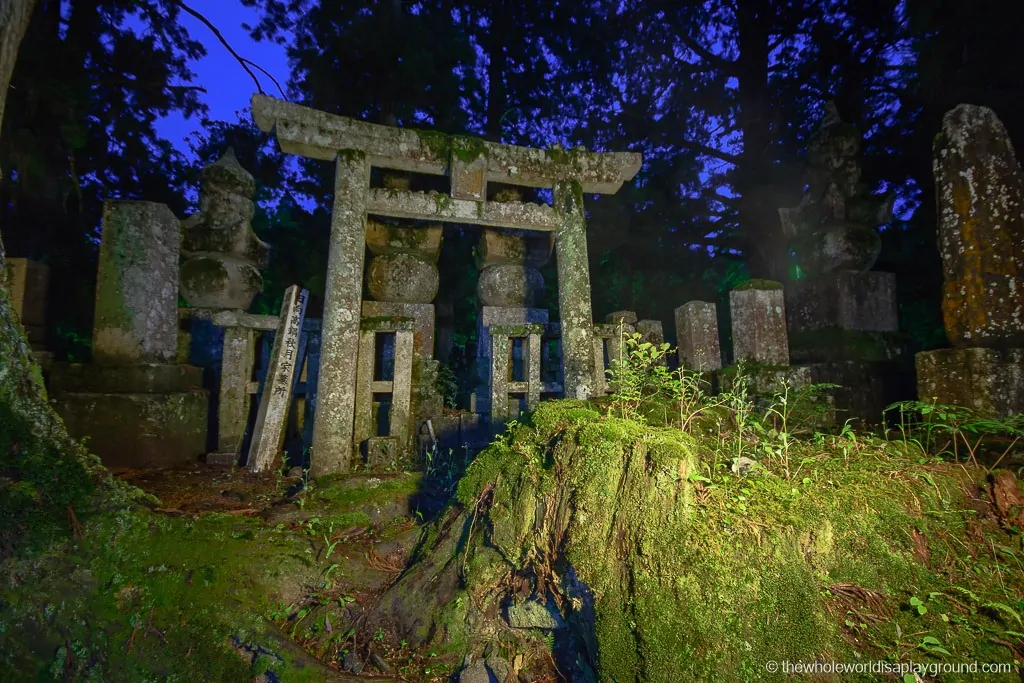
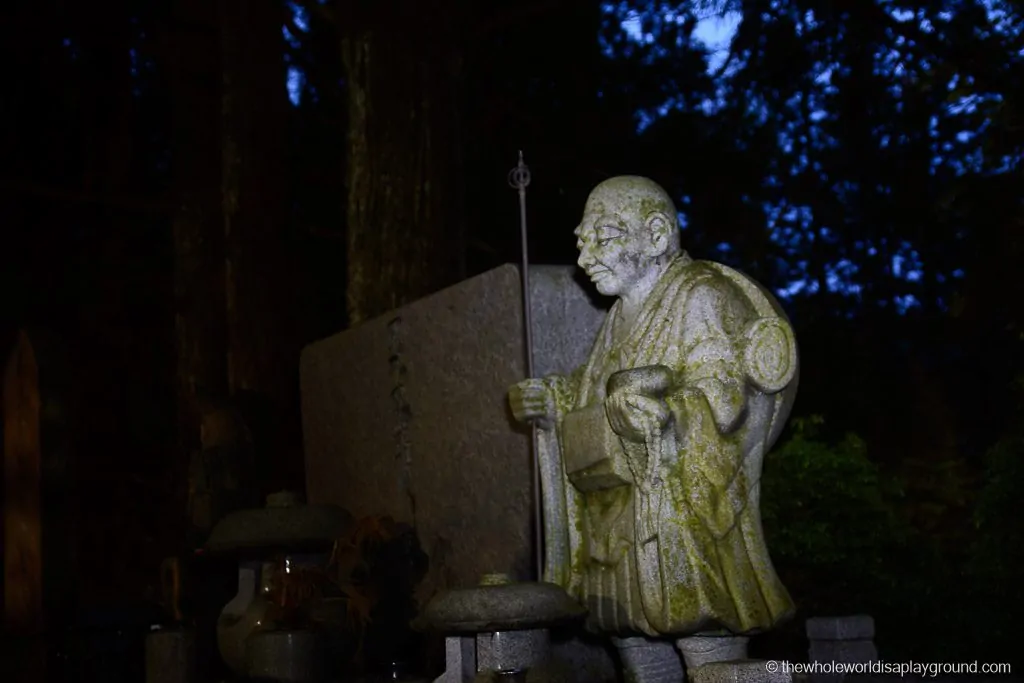
A walk through Okunoin: Okunoin at Dawn
The morning mist was lifting when we returned to the forest cemetery a few hours later as dawn broke around 5am. In the morning light the cemetery was even more dramatic and the pathway opened up to yet more graves which stretched as far as our eyes could see. Moss adorned the forest floor and the stone memorials and the morning dew matted the ground as we made our way to the Mausoleum of Kobo Daishi,
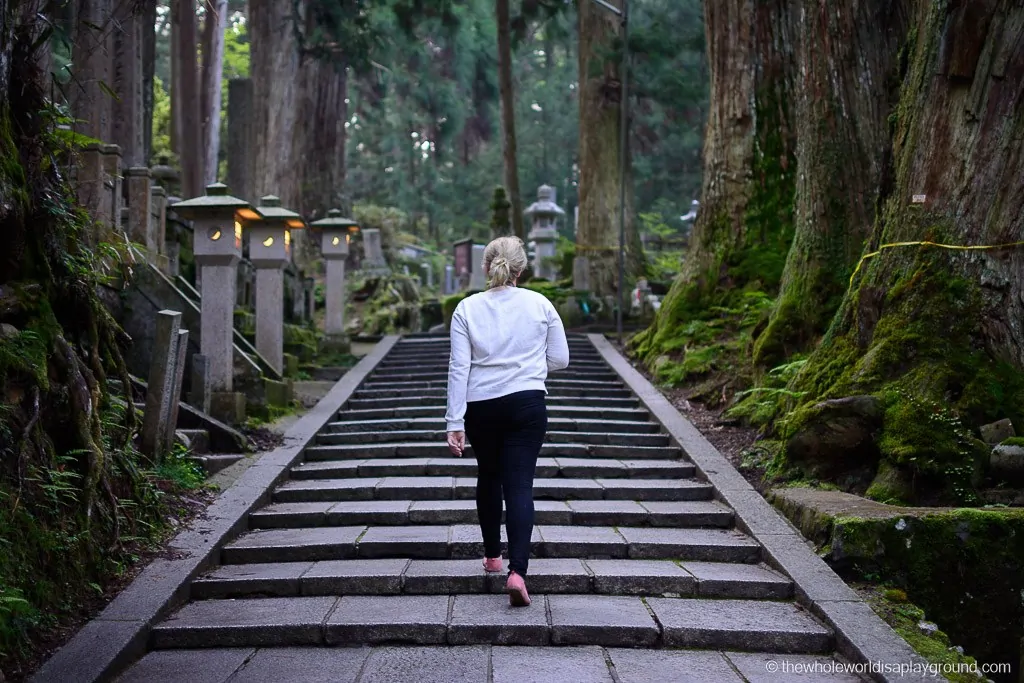
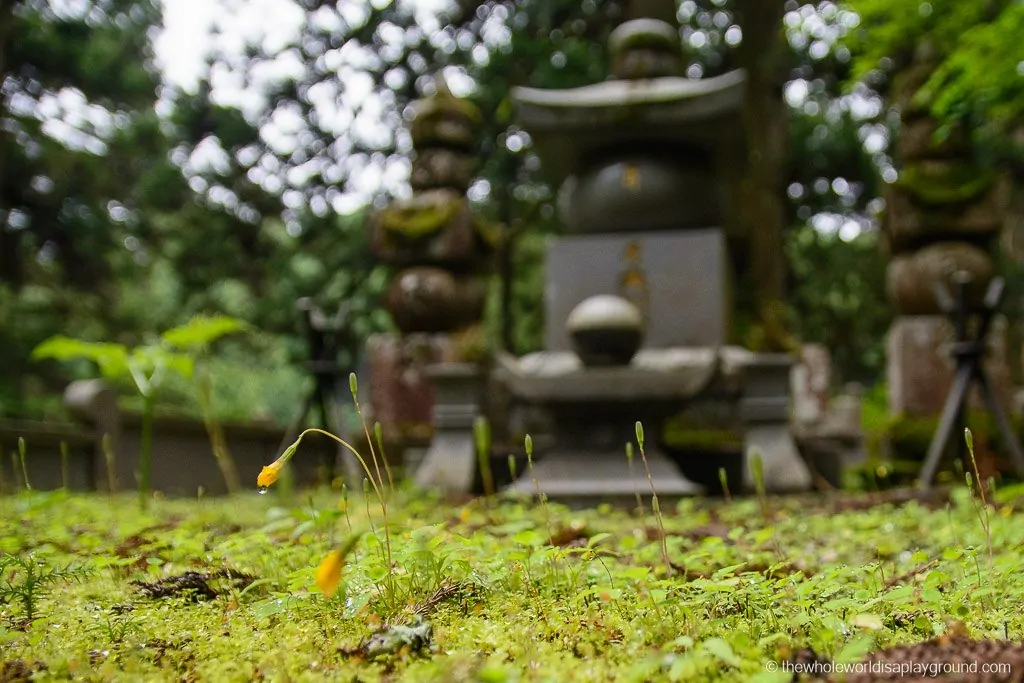
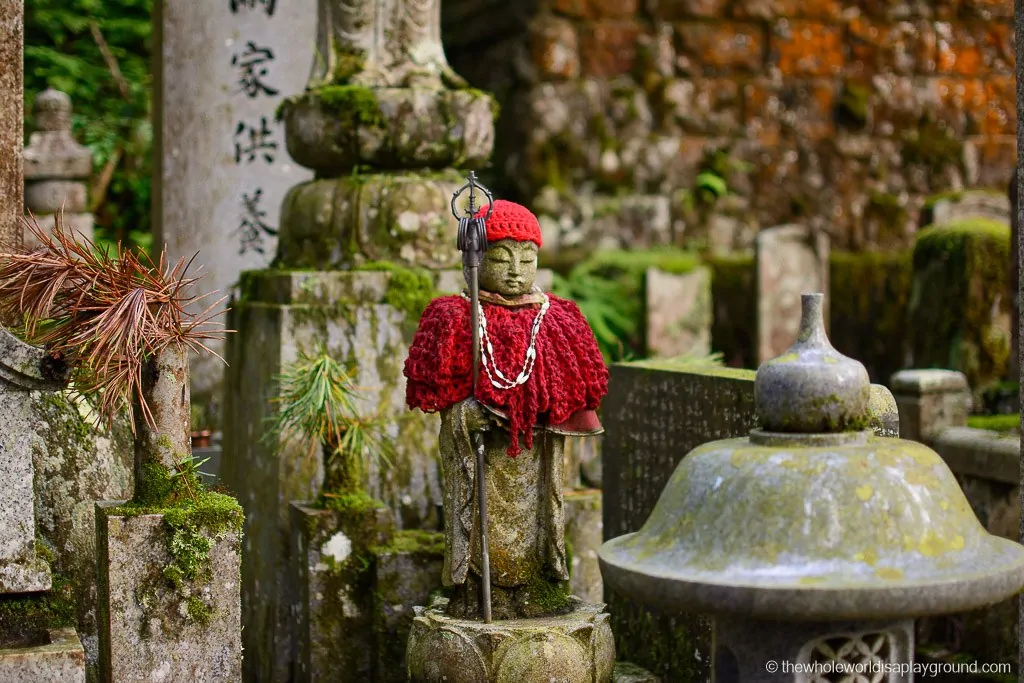
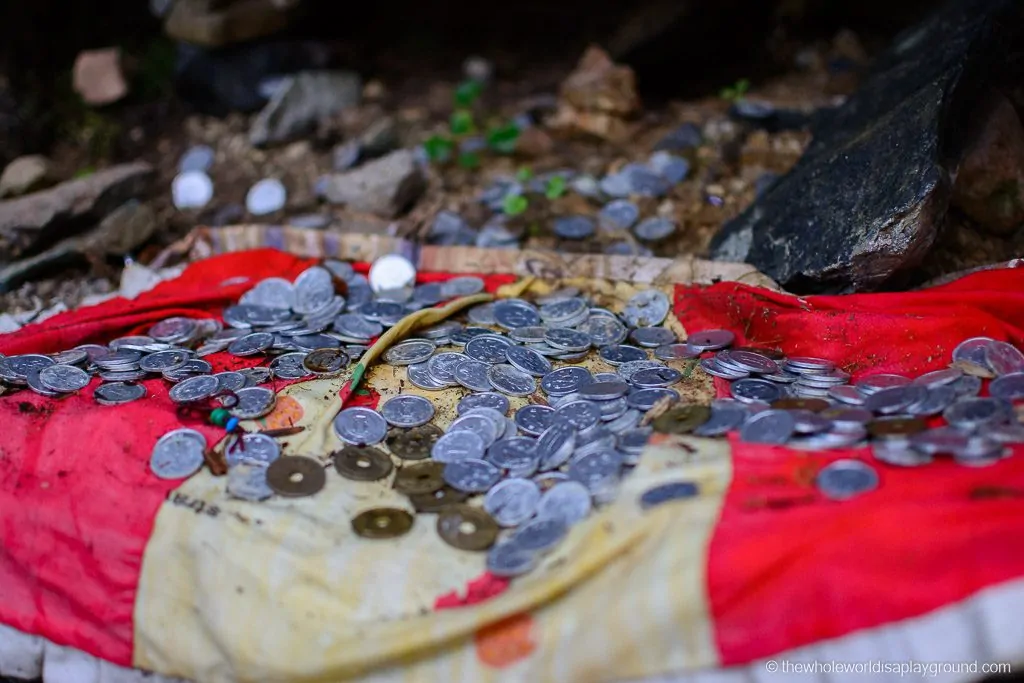
The morning offering at Okunoin
Each morning the local monks prepare a food offering for Kobo Dashi. The food is blessed and placed in a wooden box which the monks then bring to the mausoleum. The graveyard was completely deserted and we felt like we were the only people on the planet as we made our way up the snaking path following the golden robed monks to the mausoleum.
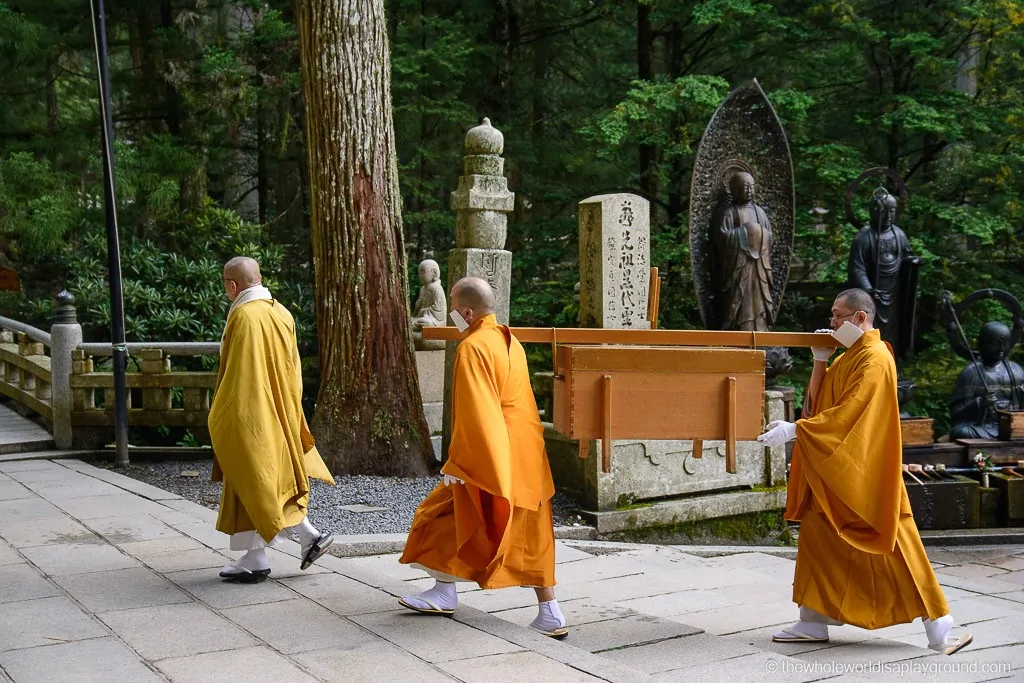
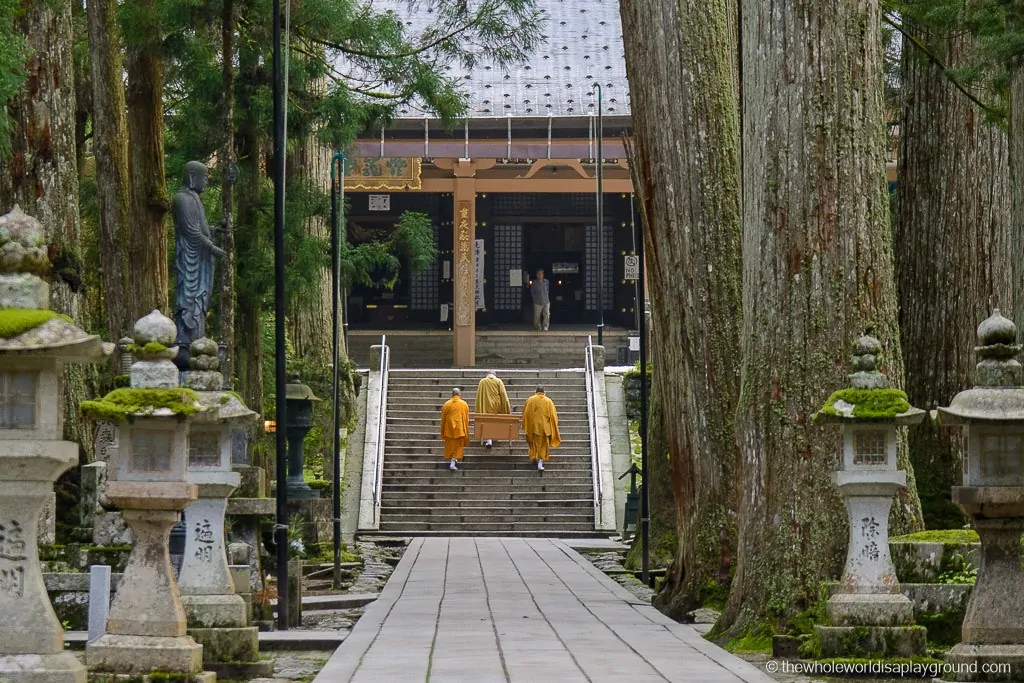
Overall
Okunoin is an incredible place to visit and its atmosphere is fitting of all the souls laid to rest within its boundaries. The belief that Kobo Dashi lies in eternal mediation in the cemetery is fascinating and it is overwhelming to see all the memorials and gravestones belonging to those who have passed and want to be near to him when he rises to meet the Buddha of the Future. Okunoin is a highlight of a visit to Mount Koya and, together with a night in a Buddhist temple, make Koyasan a once in a life time experience.
Travel Guides
Here are some of the best travel guides for planning your Japan trip. We personally used the Lonely Planet Japan series for our trip planning. Click on the images below to buy yours now!
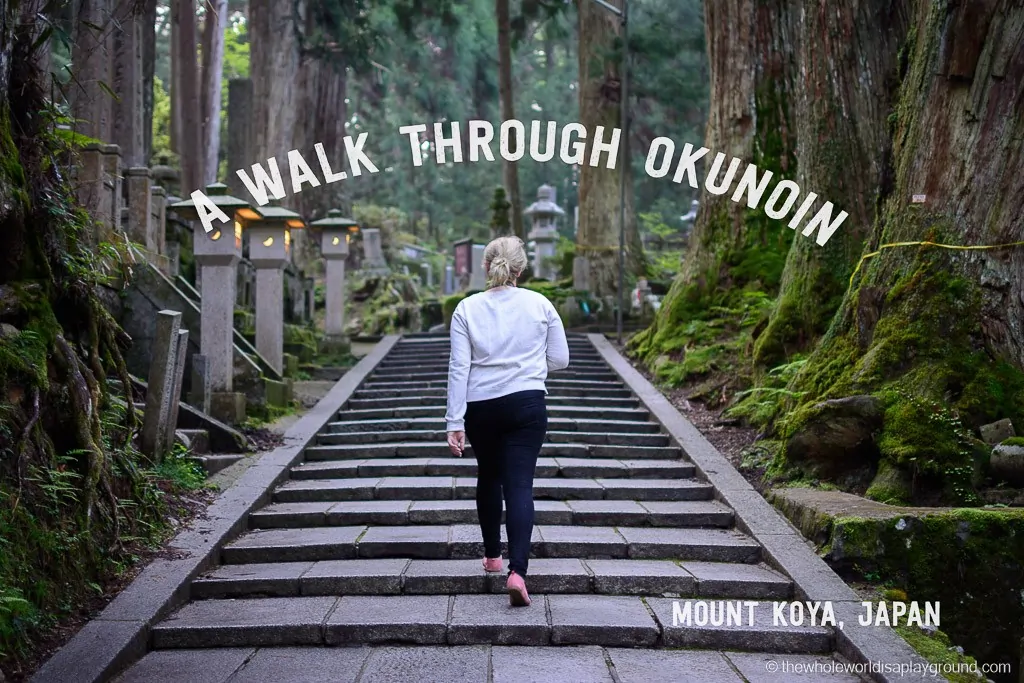
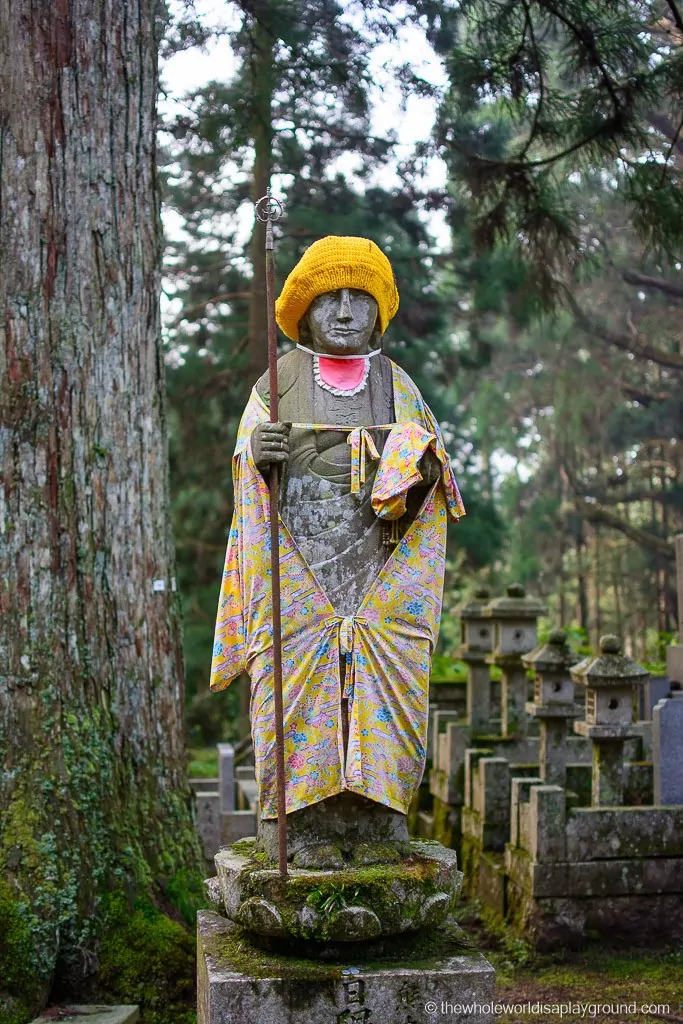
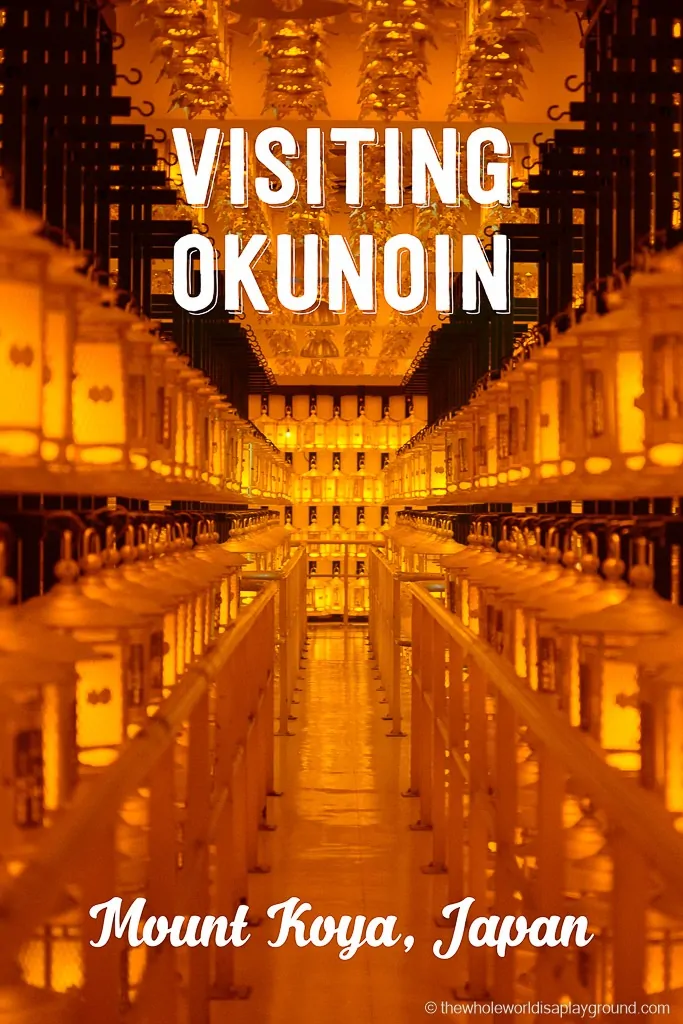
Does The Hall of Lamps (Torodo Hall) glows all the day or i need to go in a specific time ? I’m planning on making a day trip to there, thank you.
Hi Brunno, the Hall of Lamps is open during the day, following the opening hours of Kobo Daishi’s tomb. It’s open from very early morning until the late afternoon. Assuming you don’t arrive too late in the afternoon you should be ok!
Hi! Do you have to take a tour or can you self walk the cemetery at night and early dawn?
Thank you!
Hi! We walked by ourselves.